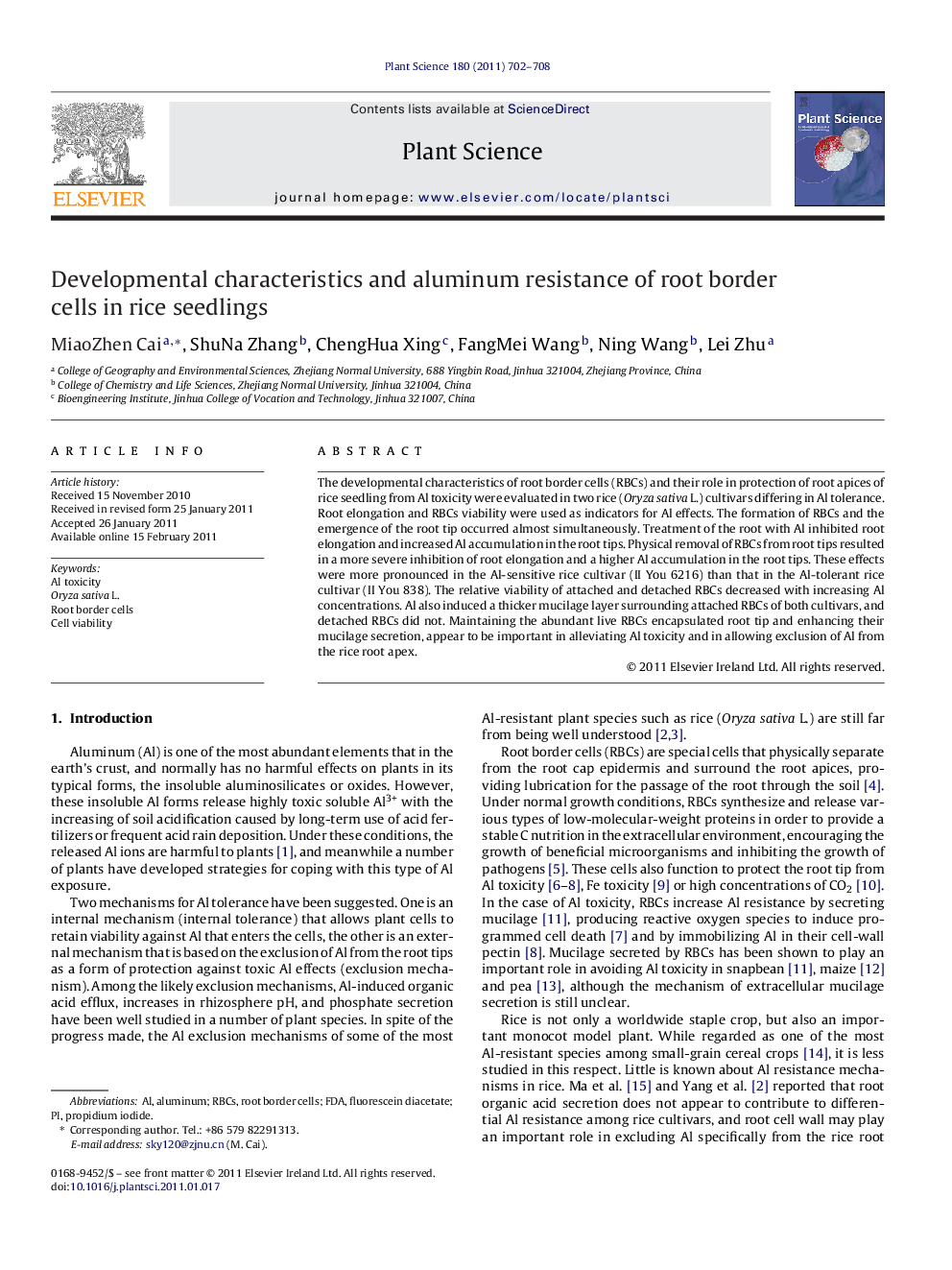| Article ID | Journal | Published Year | Pages | File Type |
|---|---|---|---|---|
| 2017590 | Plant Science | 2011 | 7 Pages |
The developmental characteristics of root border cells (RBCs) and their role in protection of root apices of rice seedling from Al toxicity were evaluated in two rice (Oryza sativa L.) cultivars differing in Al tolerance. Root elongation and RBCs viability were used as indicators for Al effects. The formation of RBCs and the emergence of the root tip occurred almost simultaneously. Treatment of the root with Al inhibited root elongation and increased Al accumulation in the root tips. Physical removal of RBCs from root tips resulted in a more severe inhibition of root elongation and a higher Al accumulation in the root tips. These effects were more pronounced in the Al-sensitive rice cultivar (II You 6216) than that in the Al-tolerant rice cultivar (II You 838). The relative viability of attached and detached RBCs decreased with increasing Al concentrations. Al also induced a thicker mucilage layer surrounding attached RBCs of both cultivars, and detached RBCs did not. Maintaining the abundant live RBCs encapsulated root tip and enhancing their mucilage secretion, appear to be important in alleviating Al toxicity and in allowing exclusion of Al from the rice root apex.
Research highlights► Developmental characteristics and Al resistance of RBCs were evaluated in rice. ► Removal of RBCs from root tips enhanced root growth inhibition and Al accumulation. ► Tolerant cultivar has higher attached RBCs viability and thicker mucilage layer. ► Keeping living attached RBCs and enhancing mucilage secretion defend Al toxicity.
